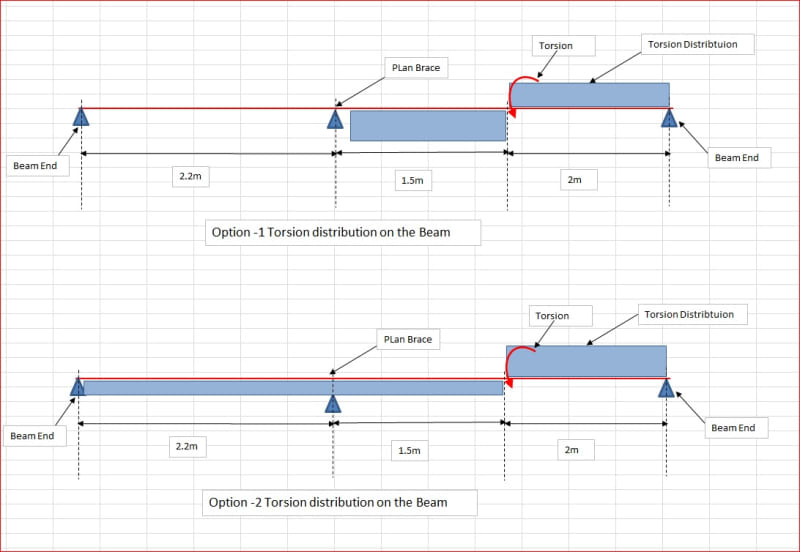allimuthug
Civil/Environmental
Hi,
I have a pipe rack of length 10m x width 5.7m x height 2.5m. It has plan brace as well as horizontal bracing as shown in the picture attached. The columns and the vertical brace are of HE 300B and HE 180A. The Pipe Rack supports a pipe which is anchored to the transverse beam(HE400A). The Anchor support of pipe is 1.5m away from the Plan brace connection.
Since the Load is applied to top flange it is transferred to the transverse beam as torsion and minor axis bending, but the question is weather the Plan brace will resist torsion since it is connected 120mm below the top flange. Also please explain in detail for the torsional distribution if the plan brace resist torsion.
[URL unfurl="true"]https://res.cloudinary.com/engineering-com/image/upload/v1537765958/tips/Torsion_Distribution_izjwre.pdf[/url]

I have a pipe rack of length 10m x width 5.7m x height 2.5m. It has plan brace as well as horizontal bracing as shown in the picture attached. The columns and the vertical brace are of HE 300B and HE 180A. The Pipe Rack supports a pipe which is anchored to the transverse beam(HE400A). The Anchor support of pipe is 1.5m away from the Plan brace connection.
Since the Load is applied to top flange it is transferred to the transverse beam as torsion and minor axis bending, but the question is weather the Plan brace will resist torsion since it is connected 120mm below the top flange. Also please explain in detail for the torsional distribution if the plan brace resist torsion.
[URL unfurl="true"]https://res.cloudinary.com/engineering-com/image/upload/v1537765958/tips/Torsion_Distribution_izjwre.pdf[/url]

